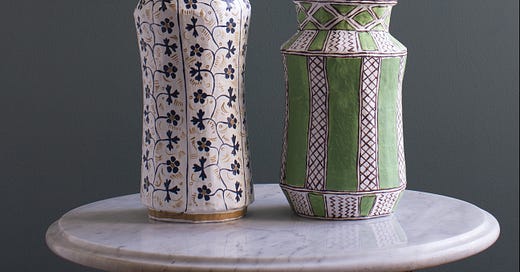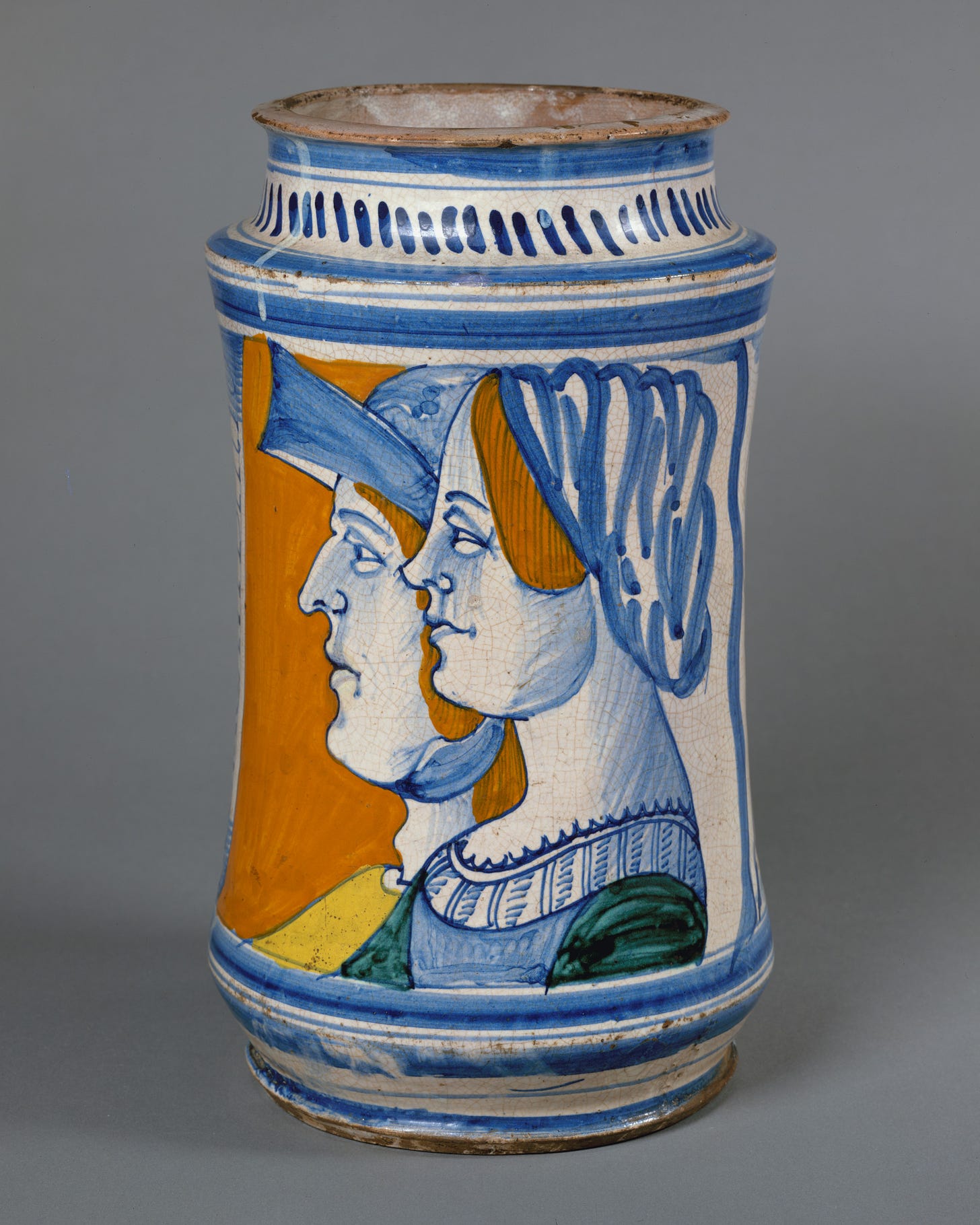Inspired by History: Crafting Apothecary Jars from Cardboard and Paper Mâché
A love letter to the "glass jar" of centuries past. Plus, crafting upcycled versions!
I've made it my mission to explore every gallery and hall of The Met, and I discovered a recurring motif: a distinct pottery shape that weaves its way through the museum's collections. It became an unexpected scavenger hunt! If you venture there, keep your eyes peeled in the Islamic Arts wing, the Medieval Galleries, and the Robert Lehman Maiolica collection. Once you recognize it, you'll see it everywhere.
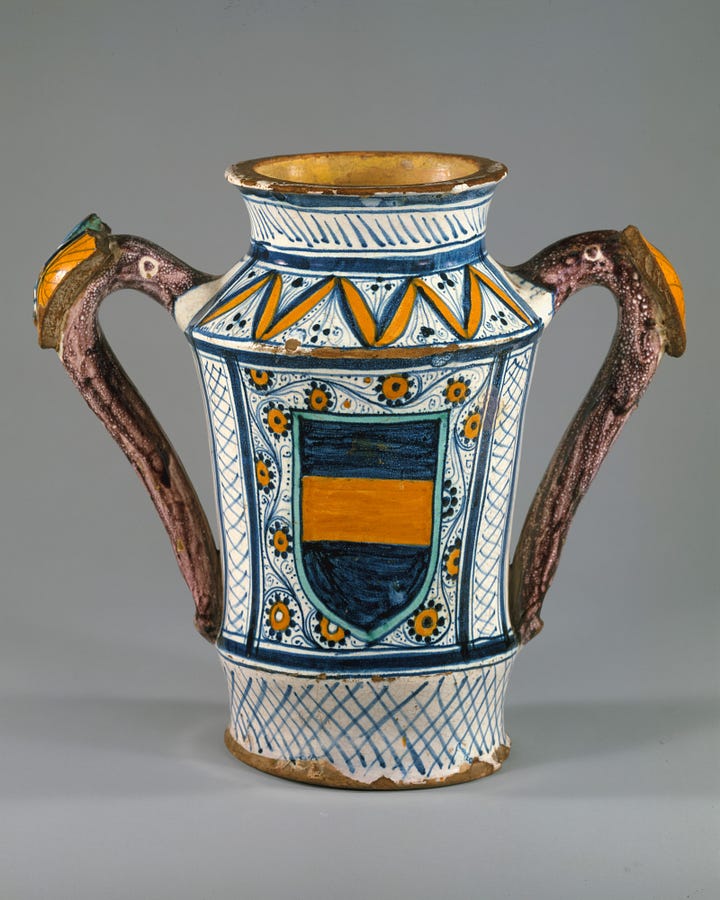
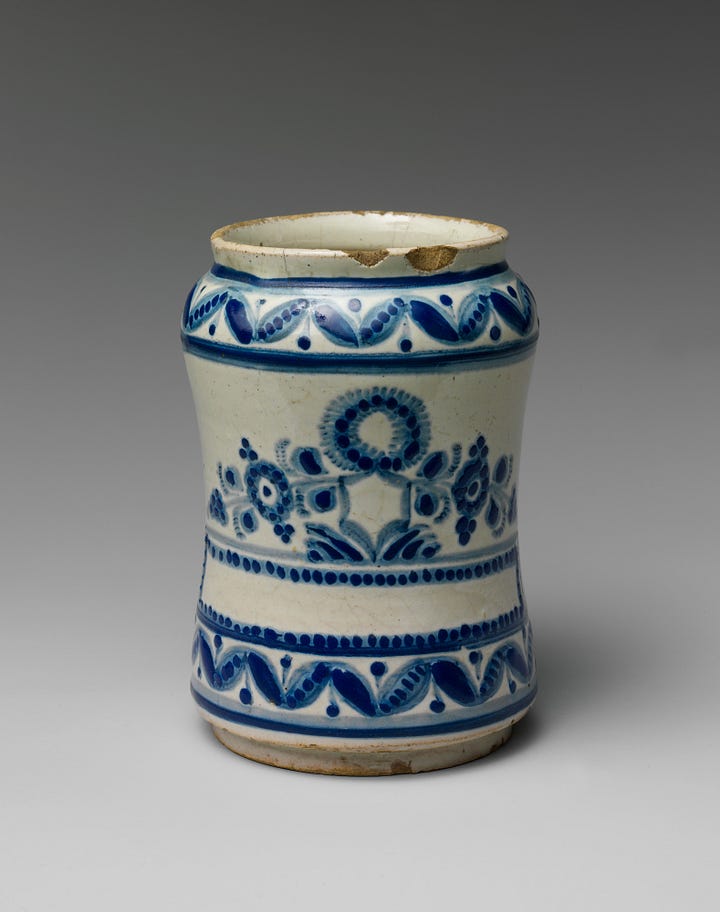
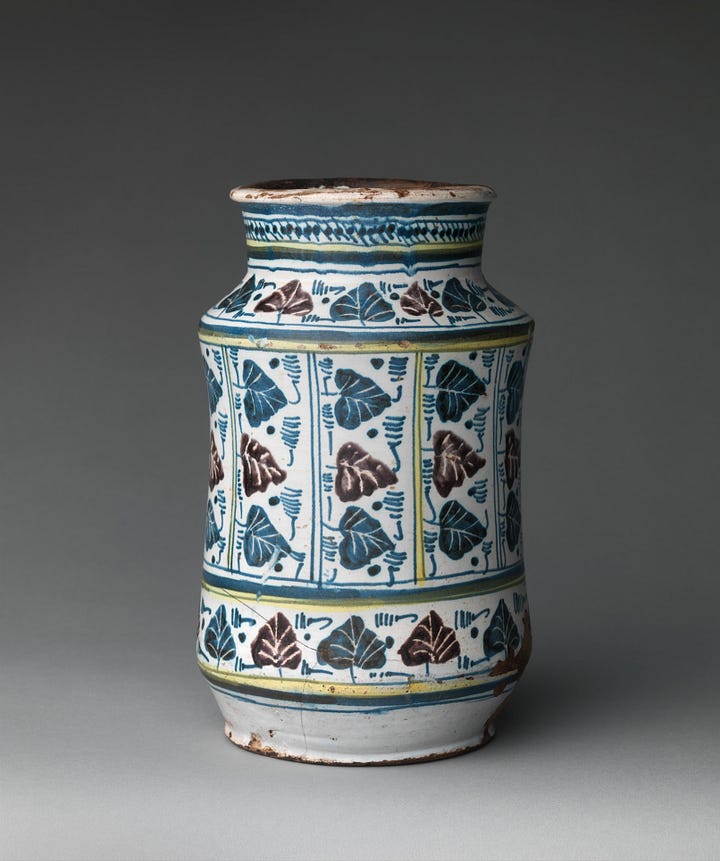
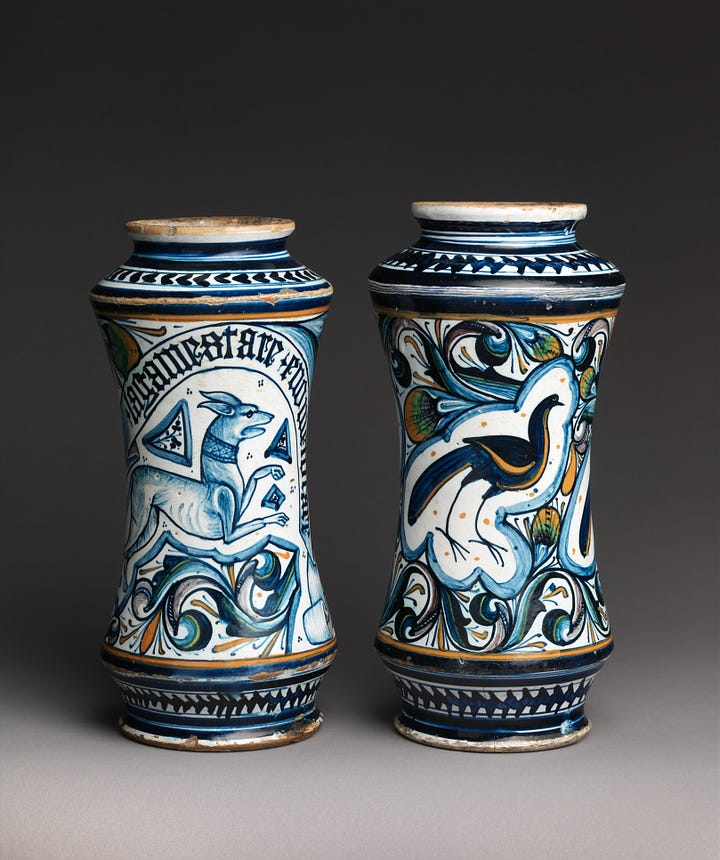
These vessels are typically roughly the same size, with a lip at the top, and frequently have a cylindrical shape that dips in the middle. Sometimes, with handles. They were once an everyday essential (especially for pharmacies, dispensaries, hospitals, and monasteries), known as apothecary jars, pharmacy jars, medicinal jars, drug jars, or albarellos. From around 600 BC until the 18th century, these jars were used to store and trade all sorts of goods: spices, pigments, roots, honey, beeswax, and more. The top would be sealed with parchment and a cord to cover the contents.
Keep reading with a 7-day free trial
Subscribe to Corrie Beth Makes: Curiosity in Craft to keep reading this post and get 7 days of free access to the full post archives.


